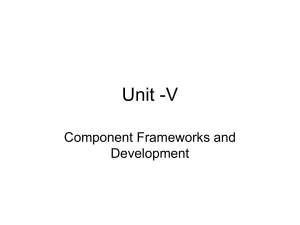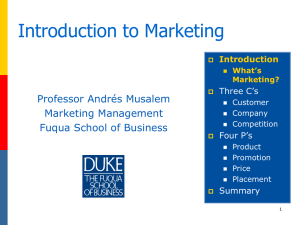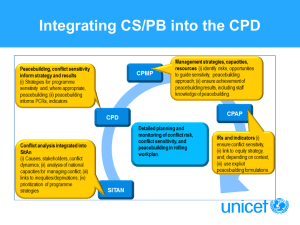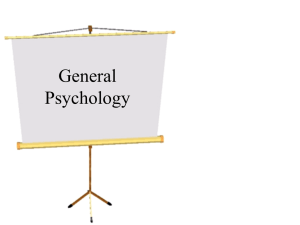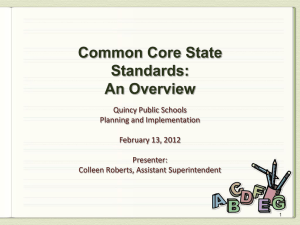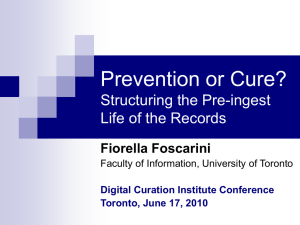Object-Oriented Application Frameworks
advertisement
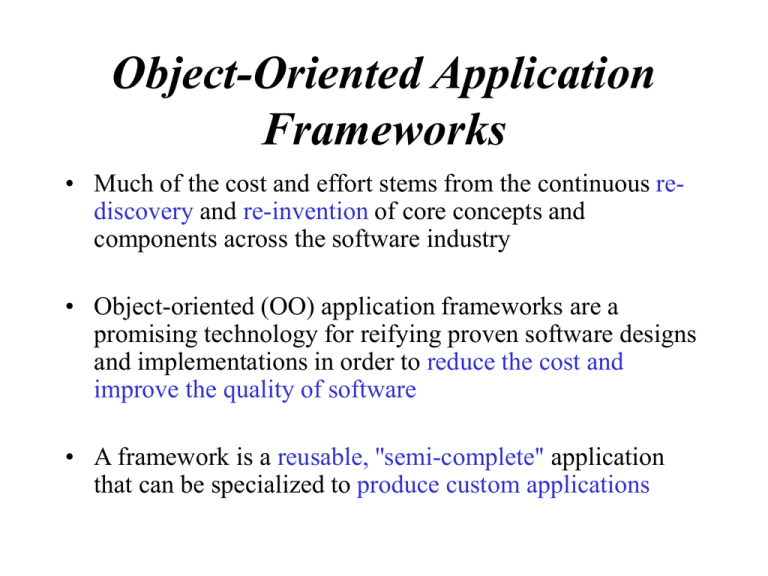
Object-Oriented Application Frameworks • Much of the cost and effort stems from the continuous rediscovery and re-invention of core concepts and components across the software industry • Object-oriented (OO) application frameworks are a promising technology for reifying proven software designs and implementations in order to reduce the cost and improve the quality of software • A framework is a reusable, ''semi-complete'' application that can be specialized to produce custom applications Benefits of OO Application • The primary benefits of OO application frameworks stem from the – Modularity – Reusability – Extensibility – Inversion of control they provide to developers Modularity • Frameworks enhance modularity by encapsulating volatile implementation details behind stable interfaces • Framework modularity helps improve software quality by localizing the impact of design and implementation changes Reusability • The stable interfaces provided by frameworks enhance reusability by defining generic components that can be reapplied to create new applications. • Reuse of framework components can yield substantial improvements in programmer productivity, as well as enhance the quality, performance, reliability and interoperability of software Extensibility • A framework enhances extensibility by providing explicit hook methods that allow applications to extend its stable interfaces • Hook methods systematically decouple the stable interfaces and behaviors of an application domain from the variations required by instantiations of an application in a particular context Inversion of control • The run-time architecture of a framework is characterized by an inversion of control • This architecture enables canonical application processing steps to be customized by event handler objects that are invoked via the framework's reactive dispatching mechanism Overview of Widely Used Frameworks • Early object-oriented frameworks originated in the domain of graphical user interfaces (GUIs) • Application developers in more complex domains have traditionally lacked standard ''off-the-shelf'' frameworks • Fortunately, the next generation of OO application frameworks are targeting complex business and application domains Classifying Application Frameworks Scope • System infrastructure frameworks • Middleware integration frameworks • Enterprise application frameworks Techniques used to extend frameworks • White-box frameworks • Black-box frameworks System infrastructure frameworks • These frameworks simplify the development of portable and efficient system infrastructure • System infrastructure frameworks are primarily used internally within a software organization and are not sold to customers directly Middleware integration frameworks • These frameworks are commonly used to integrate distributed applications and components • Middleware integration frameworks are designed to enhance the ability of software developers to modularize, reuse, and extend their software infrastructure to work seamlessly in a distributed environment • Middleware integration frameworks represent a thriving market, and are rapidly becoming commodities Enterprise application frameworks • These frameworks address broad application domains and are the cornerstone of enterprise business activities • Relative to System infrastructure and Middleware integration frameworks, Enterprise frameworks are expensive to develop and/or purchase. However, Enterprise frameworks can provide a substantial return on investment since they support the development of end-user applications and products directly White-box & Black-box • White-box frameworks rely heavily on OO language features like inheritance and dynamic binding to achieve extensibilty (1) inheriting from framework base classes (2) overriding pre-defined hook methods • Black-box frameworks support extensibility by defining interfaces for components that can be plugged into the framework via object composition (1) defining components that conform to a particular interface (2) integrating these components into the framework White-box & Black-box • White-box frameworks require application developers to have intimate knowledge of the frameworks' internal structure • Black-box frameworks are structured using object composition and delegation rather than inheritance • As a result, black-box frameworks are generally easier to use and extend than white-box frameworks. However, black-box frameworks are more difficult to develop Strengths and weaknesses of Application Frameworks • • • • • • • Development effort Learning curve Integratability Maintainability Validation and defect removal Efficiency Lack of standards Future Trends • Reducing framework development effort • Greater focus on domain-specific enterprise frameworks • Blackbox frameworks • Framework documentation • Processes for managing framework development • Framework economics The Articles • The articles in this theme issue describe how OO application frameworks provide a powerful vehicle for reuse, as well as a way to capture the essence of successful patterns, architectures, components, policies, services, and programming mechanisms • http://csce.unl.edu/~fayad/
